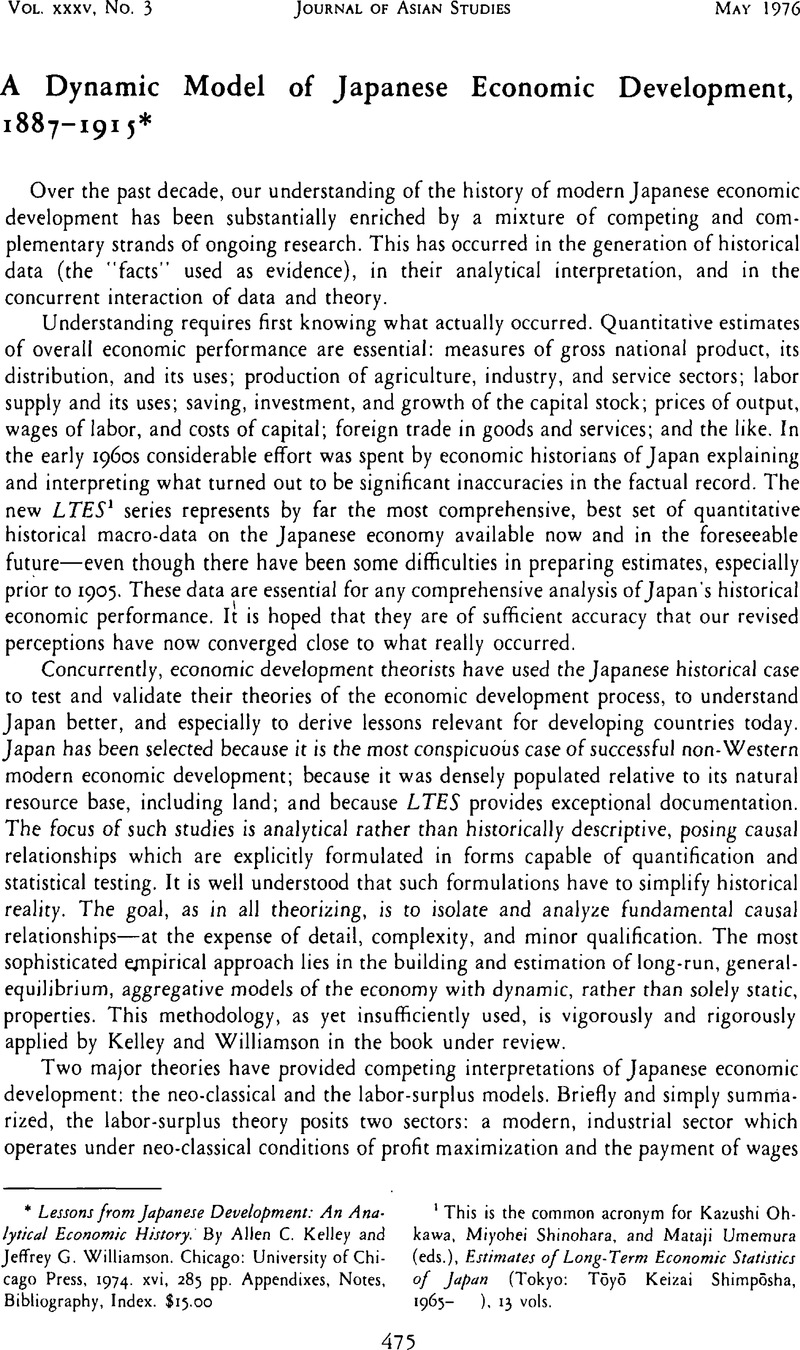No CrossRef data available.
Published online by Cambridge University Press: 23 March 2011

1 This is the common acronym for Ohkawa, Kazushi, Shinohara, Miyohei, and Umemura, Mataji (eds.), Estimates of Long-Term Economic Statistics of Japan (Tōkyō: Toyo Keizai Shimpōsha, 1965-), 13Google Scholar vols.
2 Minami, Ryoshin, The Turning Point in Economic Development: Japan's Experience (Tokyo: Kinokuniya Bookstore Co., 1973).Google Scholar
3 This excludes models of international trade in which a country has two productive sectors-one for traded goods and services, the other solely for the home market.
4 Kelley, Allen C., Williamson, Jeffrey G., and Cheetham, Russell J., Dualistic Economic Development: Theory and History (Chicago: University of Chicago Press, 1972)Google Scholar; reviewed in journal of Asian Studies, XXXIII, 2 (Feb. 1974), pp. 319-21.
5 Though not clarified in the text, the authors have assured me by letter that they did not experiment with different parameter values.
6 Computed from LTES, Vol. 1: National Income (1974), Table 1, p. 178.
7 Between 1903-14 Japan was a net borrower in all years but two, in a cumulative amount of 934 million yen, equal to 15.6% of cumulative gross national saving for the period. Ibid., Table 6, p. 190.
8 I benefited from discussions with Gary Saxonhouse on these points.